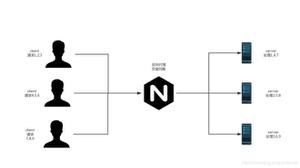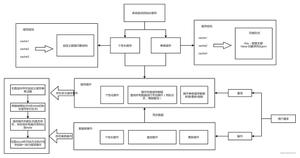SpringBoot注入配置文件的3种方法详解
这篇文章主要介绍了SpringBoot注入配置文件的3种方法详解,文中通过示例代码介绍的非常详细,对大家的学习或者工作具有一定的参考学习价值,需要的朋友可以参考下
方案1:@ConfigurationProperties+@Component
定义spring的一个实体bean装载配置文件信息,其它要使用配置信息是注入该实体bean
/**
* 将配置文件中配置的每一个属性的值,映射到这个组件中
* @ConfigurationProperties:告诉SpringBoot将本类中的所有属性和配置文件中相关的配置进行绑定;
* prefix = "person":配置文件中哪个下面的所有属性进行一一映射
*
* 只有这个组件是容器中的组件,才能容器提供的@ConfigurationProperties功能;
*
*/
@Component
@ConfigurationProperties(prefix = "person")
public class Person {
private String lastName;
private Integer age;
private Boolean boss;
private Date birth;
private Map<String,Object> maps;
private List<Object> lists;
private Dog dog;
方案2:@Bean+@ConfigurationProperties
我们还可以把@ConfigurationProperties还可以直接定义在@bean的注解上,这是bean实体类就不用@Component和@ConfigurationProperties了,这边是Boot的动态数据源切换的类。
package com.topcheer.oss.base.datasource;
import com.alibaba.druid.pool.DruidDataSource;
import com.xiaoleilu.hutool.crypto.symmetric.SymmetricAlgorithm;
import com.xiaoleilu.hutool.crypto.symmetric.SymmetricCrypto;
import com.xiaoleilu.hutool.util.CharsetUtil;
import com.xiaoleilu.hutool.util.HexUtil;
import lombok.extern.slf4j.Slf4j;
@Slf4j
public class UmspscDataSource extends DruidDataSource {
private static final long serialVersionUID = 4766401181052251539L;
private String passwordDis;
/**
* 密匙
*/
private final static String Pkey ="1234565437892132";
@Override
public String getPassword() {
if(passwordDis != null && passwordDis.length() > 0) {
return passwordDis;
}
String encPassword = super.getPassword();
if(null == encPassword) {
return null;
}
log.info("数据库密码加解密,{" + encPassword + "}");
try {
// 密文解密,解密方法可以修改
String key = HexUtil.encodeHexStr(Pkey);
SymmetricCrypto aes = new SymmetricCrypto(SymmetricAlgorithm.AES, key.getBytes());
passwordDis = aes.decryptStr(encPassword, CharsetUtil.CHARSET_UTF_8);
return passwordDis;
} catch (Exception e) {
log.error("数据库密码解密出错,{"+encPassword + "}");
//log.error(LogUtil.e(e));
//throw new Exception("数据库密码解密失败!", e);
return null;
}
}
}
@Bean(name = "systemDataSource")
@ConfigurationProperties(ignoreUnknownFields = false, prefix = "spring.datasource.system")
public DataSource systemDataSource() {
return new UmspscDataSource();
}
@Bean(name = "secondDataSource")
@ConfigurationProperties(ignoreUnknownFields = false, prefix = "spring.datasource.second")
public DataSource secondDataSource() {
return new UmspscDataSource();
}
@Bean(name="systemJdbcTemplate")
public JdbcTemplate systemJdbcTemplate(
@Qualifier("systemDataSource") DataSource dataSource) {
return new JdbcTemplate(dataSource);
}
@Bean(name="secondJdbcTemplate")
public JdbcTemplate secondJdbcTemplate(
@Qualifier("secondDataSource") DataSource dataSource) {
return new JdbcTemplate(dataSource);
}
方案3:@ConfigurationProperties + @EnableConfigurationProperties
我们和上面例子一样注解属性,然后用 Spring的@Autowire来注入 mail configuration bean:
package com.dxz.property;
import org.springframework.boot.context.properties.ConfigurationProperties;
@ConfigurationProperties(locations = "classpath:mail.properties", ignoreUnknownFields = false, prefix = "mail")
public class MailProperties {
private String host;
private int port;
private String from;
private String username;
private String password;
private Smtp smtp;
// ... getters and setters
public String getHost() {
return host;
}
public void setHost(String host) {
this.host = host;
}
public int getPort() {
return port;
}
public void setPort(int port) {
this.port = port;
}
public String getFrom() {
return from;
}
public void setFrom(String from) {
this.from = from;
}
public String getUsername() {
return username;
}
public void setUsername(String username) {
this.username = username;
}
public String getPassword() {
return password;
}
public void setPassword(String password) {
this.password = password;
}
public Smtp getSmtp() {
return smtp;
}
public void setSmtp(Smtp smtp) {
this.smtp = smtp;
}
@Override
public String toString() {
return "MailProperties [host=" + host + ", port=" + port + ", from=" + from + ", username=" + username
+ ", password=" + password + ", smtp=" + smtp + "]";
}
public static class Smtp {
private boolean auth;
private boolean starttlsEnable;
public boolean isAuth() {
return auth;
}
public void setAuth(boolean auth) {
this.auth = auth;
}
public boolean isStarttlsEnable() {
return starttlsEnable;
}
public void setStarttlsEnable(boolean starttlsEnable) {
this.starttlsEnable = starttlsEnable;
}
}
}
启动类及测试类:
package com.dxz.property;
import org.springframework.beans.factory.annotation.Autowired;
import org.springframework.boot.autoconfigure.SpringBootApplication;
import org.springframework.boot.builder.SpringApplicationBuilder;
import org.springframework.boot.context.properties.EnableConfigurationProperties;
import org.springframework.web.bind.annotation.RequestMapping;
import org.springframework.web.bind.annotation.RequestMethod;
import org.springframework.web.bind.annotation.ResponseBody;
import org.springframework.web.bind.annotation.RestController;
@RestController
@SpringBootApplication
@EnableConfigurationProperties(MailProperties.class)
public class TestProperty1 {
@Autowired
private MailProperties mailProperties;
@RequestMapping(value = "/hello", method = RequestMethod.GET)
@ResponseBody
public String hello() {
System.out.println("mailProperties" + mailProperties);
return "hello world";
}
public static void main(String[] args) {
//SpringApplication.run(TestProperty1.class, args);
new SpringApplicationBuilder(TestProperty1.class).web(true).run(args);
}
}
结果:
请注意@EnableConfigurationProperties注解。该注解是用来开启对@ConfigurationProperties注解配置Bean的支持。也就是@EnableConfigurationProperties注解告诉Spring Boot 能支持@ConfigurationProperties。如果不指定会看到如下异常:
Caused by: org.springframework.beans.factory.NoSuchBeanDefinitionException: No qualifying bean of type [com.dxz.property.MailProperties] found for dependency: expected at least 1 bean which qualifies as autowire candidate for this dependency. Dependency annotations: {@org.springframework.beans.factory.annotation.Autowired(required=true)}
注意: 还有其他办法 (Spring Boot 总是有其他办法!) 让@ConfigurationProperties beans 被添加 – 用@Configuration或者 @Component注解, 这样就可以在 component scan时候被发现了。
| @ConfigurationProperties | @Value | |
|---|---|---|
| 功能 | 批量注入配置文件中的属性 | 一个个指定 |
| 松散绑定(松散语法) | 支持 | 不支持 |
| SpEL | 不支持 | 支持 |
| JSR303数据校验 | 支持 | 不支持 |
| 复杂类型封装 | 支持 | 不支持 |
配置文件yml还是properties他们都能获取到值;
如果说,我们只是在某个业务逻辑中需要获取一下配置文件中的某项值,使用@Value;
如果说,我们专门编写了一个javaBean来和配置文件进行映射,我们就直接使用@ConfigurationProperties;
以上是 SpringBoot注入配置文件的3种方法详解 的全部内容, 来源链接: utcz.com/z/356058.html









